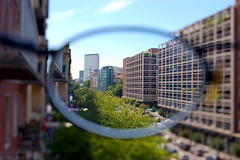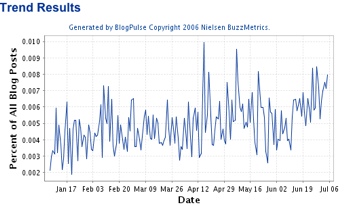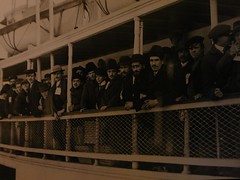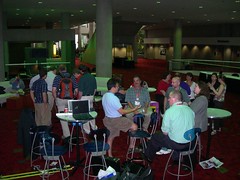 My friend, Scott Mcleod (Dangerously Irrelevant), posed a challenge for educational technology advocates a few days ago. Since he invokes my name in the post, I feel that I should in some small part, engage. He asks, in Vision Challenge – Part 1…
My friend, Scott Mcleod (Dangerously Irrelevant), posed a challenge for educational technology advocates a few days ago. Since he invokes my name in the post, I feel that I should in some small part, engage. He asks, in Vision Challenge – Part 1…
Can we articulate in a few short sentences or paragraphs what the end result looks like?
Scott continues..
Children learning collaboratively, students as self-directed learners, a computer in every kid’s hand, ubiquitous Internet access, creative problem-solving rather than rote memorization, global interconnections, etc. Whatever we think the desired end point should be: can we articulate it in a clear, concise manner that’s easily conveyable to others? Can we describe what students and teachers and administrators are doing and why (i.e., the educational purposes and benefits of doing so)?
What Mcleod is looking at is important, what the teaching and learning experience should look like. But I wonder if this is a bit premature, that perhaps we should go back to his question and take it out another notch, What should the end result, the person who graduates from our schools, look like? It seems that with the answer to this question, we might better envision what their schooling experience should be.
First of all, I see graduates who can teach themselves. I’m starting to call this learning literacy, and I think that it is THE literacy we should be teaching — the skills to resourcefully use your information environment to help yourself learn what you need to know, to do what you need to do.
I would also want to see graduates who know who, what, where, and when they are. They need to have developed a comfortable and confident sense of their culture, their physical environment, their geographic environment, and their historic circumstance — a context for their experience, one that they hold in common with people they will interact with, collaborate with, and enjoy the company of. They would also be skilled in adapting to new circumstances — able to learn, unlearn, and relearn (Alvin Toffler).
Then we think of what the classrooms, teachers, textbooks, technology, blah blah blah, need to look like to accomplish this.
Image Citation
Sciamano, Luca. “The World Through My Eyes /2.” Sciamano’s Photostream. 3 June 2006. 9 Jul 2007 <http://flickr.com/photos/sciamano/159269931/>.

 My friend, Scott Mcleod (
My friend, Scott Mcleod ( This new edition reflects two years of continued development of new web applications, my own increasing exploration and understanding about these tools and what they mean to teaching and learning, and especially to what I have learned by engaging in the great conversation with people who see what I see, but who think differently. Together, we have grown our ideas about what all this means to schooling, and it has been thrilling.
This new edition reflects two years of continued development of new web applications, my own increasing exploration and understanding about these tools and what they mean to teaching and learning, and especially to what I have learned by engaging in the great conversation with people who see what I see, but who think differently. Together, we have grown our ideas about what all this means to schooling, and it has been thrilling. In our attempt to build an alternative to the 1892 curriculum and the idea that education means learning to pass tests about what you have temporarily memorized, we have completed construction of our first full year of what is to eventually become the Virtual International Science and Technology Academy. We are looking to start a small group of students in our first year of this curriculum, Health Sciences.[1] The curriculum takes an entire year and takes up all day every day of that year. Candidates would be those who are too smart for the school system and need something to keep them interested, those who are so tired of school that they were going to drop out anyway, or anyone who has a passion for learning about health sciences.
In our attempt to build an alternative to the 1892 curriculum and the idea that education means learning to pass tests about what you have temporarily memorized, we have completed construction of our first full year of what is to eventually become the Virtual International Science and Technology Academy. We are looking to start a small group of students in our first year of this curriculum, Health Sciences.[1] The curriculum takes an entire year and takes up all day every day of that year. Candidates would be those who are too smart for the school system and need something to keep them interested, those who are so tired of school that they were going to drop out anyway, or anyone who has a passion for learning about health sciences. 

 MSNBC has published an interactive test for citizenship, posing questions from the actual test. You can take the test, and score your own eligibility 😉
MSNBC has published an interactive test for citizenship, posing questions from the actual test. You can take the test, and score your own eligibility 😉 I posted a
I posted a